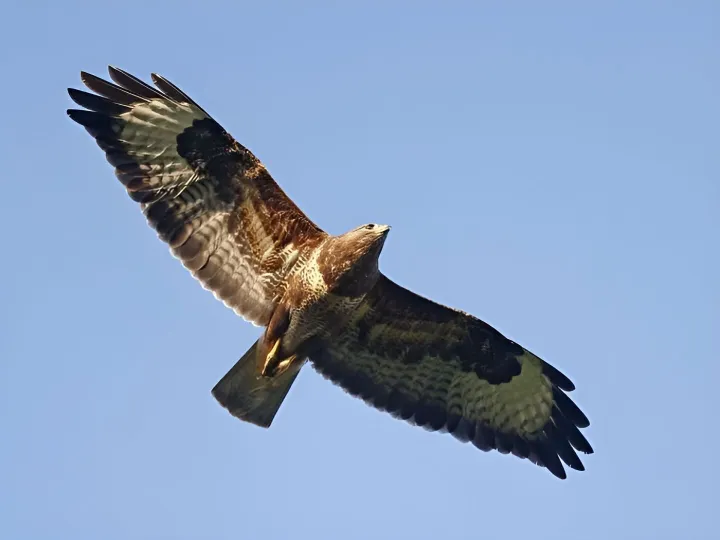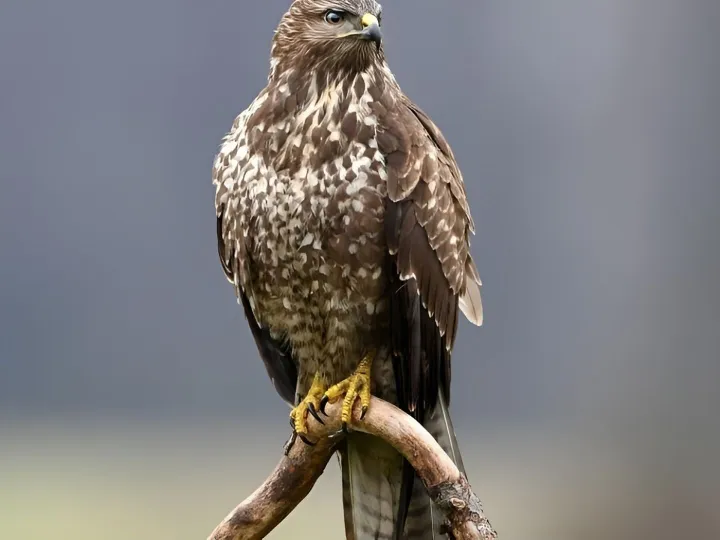The buzzard is a large bird, with broad, rounded wings, and a short neck and tail. When gliding and soaring, it often holds its wings in a shallow 'V', and the tail is fanned. Buzzards show variations in colour, ranging from dark brown to much paler tones, but all have dark wingtips and a finely barred tail. Their plaintive mewing call could be mistaken for a cat! The buzzard is an opportunistic predator that can take a wide variety of prey, which it typically hunts from a convenient perch. It feeds mostly on rabbits but will take just about any small mammal, reptile, and often carrion – the birds can occasionally be seen standing proudly on a piece of roadkill, defending it while they eat. However, when other prey is in short supply, they can sometimes be seen walking over recently ploughed fields looking for earthworms and large insects.
Pairs of buzzards mate for life. To attract a mate (or impress his existing mate), the male performs a ritual aerial display before the beginning of spring. This spectacular display is known as 'the roller coaster'. He will rise high in the sky, then turn and plummet downward in a spiral, twisting and turning as he comes down. He will then rise immediately upward to repeat the exercise. Like most birds of prey, buzzards typically build a nest in trees, usually on the woodland fringes, and they are devoted parents to a relatively small brood of young. The female lays between 2 and 4 eggs, sharing the 33-35 day incubation period with the male bird. The young leave the nest after a couple of months, becoming fully independent at around 5 months old. They will not become active breeders themselves until they are 2-3 years old.
Buzzards do not normally form flocks. However, several may be seen together if on migration or in a good habitat. As many as 20 buzzards have been spotted in one small area, though usually maintaining an average (safe?) distance of 30 metres from each other. Extremely territorial, fights can break out if one strays onto the territory of another pair.

